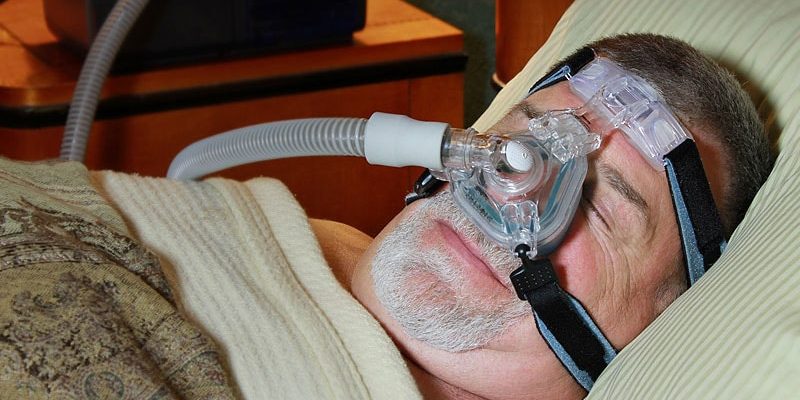Use of positive airway pressure (PAP) therapy for obstructive sleep apnea (OSA) had no impact on glucose levels in adults with type 2 diabetes, based on data from 184 individuals.
The impact of OSA on glucose metabolism is a growing area of research, but studies exploring the value of treating OSA with PAP therapy as a way to improve glycemic control have been inconsistent, write R. Nisha Aurora, MD, of NYU Grossman School of Medicine, New York City, and colleagues.
Limitations of prior studies included the use of A1c as a measure of glycemic control and lack of adherence to PAP therapy, say the researchers.
In an open-label study published in the journal Chest, they sought to address these limitations. They recruited community-dwelling adults aged 21-75 years with type 2 diabetes and newly diagnosed OSA.
Participants were randomized to nightly PAP therapy plus lifestyle counseling or counseling alone for 3 months. If issues with PAP adherence arose investigators worked with the participants to resolve them. The mean age of participants was 59.6 years and 51% were men. Demographic characteristics including race, age, body mass index, baseline A1c, and other clinical measures were similar between the groups.
The primary outcome was change in standard deviation (SD) of glucose as measured by continuous glucose monitoring (CGM) from baseline to 3 months.
At 3 months, the SD for glucose increased from baseline by an average of 0.8 mg/dL in the PAP group and 1.1 mg/dL in the control group, which was not a significant difference (P = .81). Changes in mean CGM glucose values also were not significantly different between the PAP and control groups, with increases of 4.3 mg/dL and 9.5 mg/dL, respectively (P = .20).
However, pre-lunch, post-dinner, and bedtime glucose levels were significantly higher compared with baseline at 3 months in the controls group, while those in the PAP group showed no differences in pre-lunch, post-dinner, and bedtime glucose levels compared with baseline. Meal patterns were similar between groups.
A1c increased by 0.2% in both groups, and neither group reported changes in use of glucose-lowering medications during the study period.
However, when stratified by sex, women who used PAP showed a significant improvement in the primary outcome compared with control women, the researchers note. Stratification by BMI showed no difference in the primary outcome between PAP and control groups, they add.
“The current study extends the relatively limited and conflicted body of evidence on the potential influence of OSA on glycemic variability in type 2 diabetes,” the researchers write in their discussion. The worse glucose values after dinner and at bedtime in the control group compared with the PAP group was an important finding, they say. These data “suggest that PAP therapy for moderate to severe OSA has value in patients with type 2 diabetes by possibly dampening postprandial glucose increases,” they note.
The results were limited by several factors including the relatively short duration of PAP therapy, which may not be enough to affect change, the researchers note. Other limitations included the lack of measures of insulin sensitivity or insulin resistance, and the use of data from a single center and a PAP-adherent population, they said.
However, the current study adds to the literature on the potential association between OSA and short-term glycemic control and highlights the need for larger trials of longer duration, with the ability to explore treatment effects across subgroups, they conclude.
The study was supported by the National Heart, Lung, and Blood Institute. The researchers have reported no relevant financial relationships.
Chest. Published online April 13, 2023. Abstract
For more news, follow Medscape on Facebook, Twitter, Instagram, YouTube, and LinkedIn.
Source: Read Full Article
